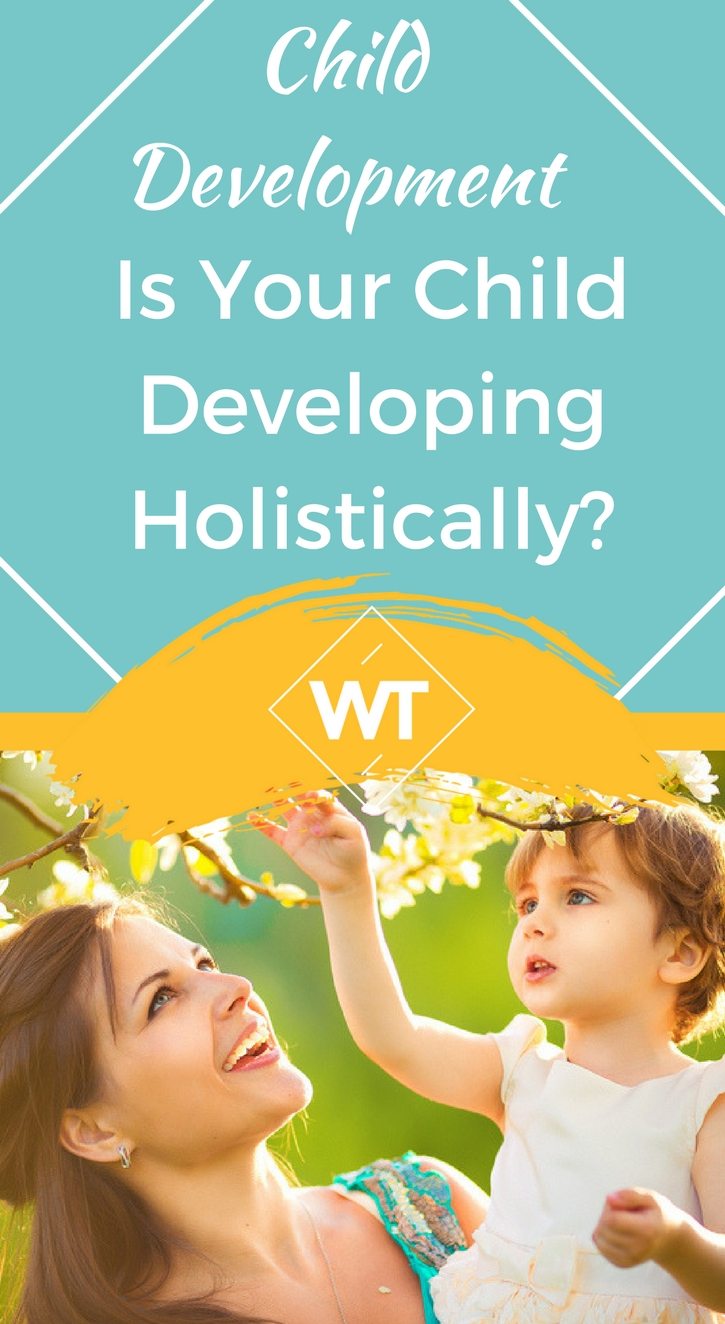Child Development – Is Your Child Developing Holistically?

The early years of a child’s life are crucial as development takes place at a very rapid pace in these years. Scientific research has established that early experiences impact and also determine an individual’s personality in a significant manner. The brain matures rapidly and the foundation on which a child’s thoughts and attitudes is built gets established.
Parents do their best to give positive experiences to their child as a positive environment facilitates better child development while unfavorable experiences hamper it. Not many however, are aware of the multiple areas that child development involves.
Read on to find out how you can give attention to multiple areas of your child’s development to ensure that he doesn’t just grow well physically, but also mentally and emotionally.
The parent’s role in child development is to provide the scaffolding for their child and gradually remove it as the child attains skills and abilities while they move from one developmental stage to another.
The Various Aspects of Child Development
Just like we understand Health to be holistic in nature as opposed to just related to the physical dimension, we also understand a child’s development to be holistic in nature that includes
- Physical development,
- Cognitive development,
- Social development,
- Language development and
- Emotional development.
The World Health Organization’s (WHO) defines Health as, ‘a state of complete physical, mental and social well-being and not merely the absence of disease or infirmity.’
We are all familiar with Physical development which includes a child’s height gain, weight gain and normal body development over time. Another aspect of Physical development is Motor development which concerns itself with the development of a child’s Gross motor skills and Fine Motor skills.
Gross Motor Skills refer to the child’s control over the movement of his large muscles. These large muscles are involved in activities like running, jumping, sliding, crawling and maintaining body balance.
Fine motor skills refer to the child’s ability to control the small muscles of his hand and wrist. These muscles get used when a child writes, draws, colours or paints. Playing with building blocks and clay modeling also give children an opportunity to acquire and practice fine motor skills.
Cognitive Development refers to the development of cognition and intelligence in the child. As the child encounters various objects, situations and people, he forms impressions and understands concepts. The more the stimulation a child receives from caretakers or parents, the better will be his cognitive development.
The Social Development of a child impacts his attitude towards others significantly. It is commonly said that the mother-child relationship plays a crucial role in determining the child’s psychology towards others. A healthy, secure and loving relationship with the mother who is the primary caretaker of the child is a necessity to ensure healthy social development of a child. Interacting and playing with other children adds to a child’s sense of well-being and teaches him several ‘Dos and Don’ts’ about interacting with others.
Language Development concerns itself with the child’s ability to express himself effectively. The better the child’s language development, the more he will gain in terms of cognitive and social development as well since he will be able to learn more effectively than a child who doesn’t comprehend language.
Emotional Development refers to the child’s ability to understand as well as manage his emotions. Managing disappointments, sharing toys and possessions, understanding another person’s perspective, and overcoming fears are only some of things that reflect a child’s level of development in this regard. Some children easily learn to regulate emotions while others find it difficult. This largely depends on the child’s emotional temperament.
Emotional development is a complex task that begins in infancy and continues into adulthood. Their emotions are also increasingly influenced by their thinking. They become more aware of their own feelings and are better able to recognize and understand other people’s feelings.
Inter-relationship amongst Various Aspects
All of these different aspects of child development are not independent of each other but are interlinked inseparably. Development in one area impacts development in other areas as well and problems in one area impact other areas as well.
Shireen was born to a mute mother in a small town in Amritsar. Though she was normal, she did not learn to speak until she was around 5-years old. Listening to speech is a crucial aspect involved in language development and because of the absence of this input in adequate amounts, her progress got affected.
This also had an impact on her social development in the early years as she could not speak like the other kids. Though she enjoyed playing with others, she could not speak with them comfortably which impacted her levels of self-confidence as well.
Conclusion
Child development has to be holistic. Provide children with positive experiences and development-oriented stimulation to boost their development in all spheres. Every child has the right to develop to his or her full potential and that is exactly what enriching experiences and activities in a secure and loving environment achieve.
The interaction between the child and his environment leads to the development of his skills and traits. The right kind of these interactions result in helping the child reach his full capacity.









Leave a Reply